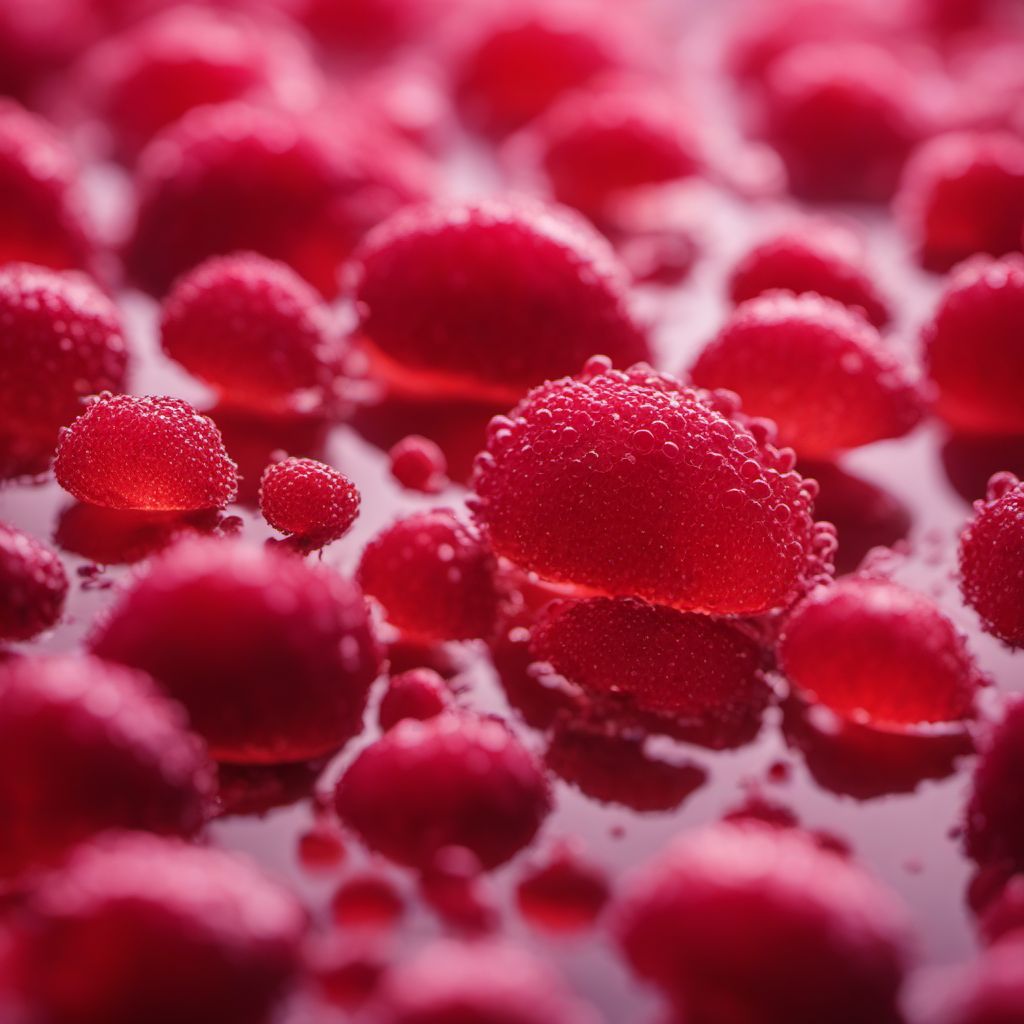
Ingredient
Red algae
The Vibrant Oceanic Delicacy
Red algae encompass a wide range of species, including nori, dulse, and Irish moss. These marine plants are known for their vibrant red, purple, or green hues and their distinct textures, which can range from tender and delicate to chewy and crunchy. Red algae have a mild, slightly salty taste that complements a variety of dishes. They are commonly used in Asian cuisines, particularly in sushi rolls, salads, and soups. Red algae are also valued for their nutritional content, as they are rich in vitamins, minerals, and antioxidants.
Origins and history
Red algae have been consumed by various cultures around the world for centuries. In Asian countries like Japan, China, and Korea, red algae have been an integral part of traditional cuisine for thousands of years. They are harvested from the ocean and dried or processed into various forms, such as sheets, flakes, or powders. Red algae are also used in the production of agar, a gelatinous substance commonly used as a thickening agent in desserts and other food products. Today, red algae are enjoyed globally and are recognized for their health benefits and culinary versatility.
Nutritional information
Red algae are low in calories and fat but rich in essential nutrients. They are a good source of vitamins (such as vitamin A, vitamin C, and vitamin K), minerals (such as iodine, calcium, and iron), and dietary fiber. Red algae also contain antioxidants that help protect against oxidative stress and support overall health. However, it is important to note that some red algae species may contain high levels of iodine, which can be problematic for individuals with thyroid conditions. It is advisable to consume red algae in moderation and consult with a healthcare professional if you have any concerns.
Allergens
Some individuals may be allergic to red algae, particularly those with seafood allergies. It is recommended to exercise caution and perform a patch test before consuming red algae for the first time. If any adverse reactions occur, discontinue use and seek medical advice.
How to select
When selecting red algae, look for products that are sourced from reputable suppliers and have undergone proper processing and quality control measures. Choose dried red algae that are free from mold, excessive moisture, or strong odors. If purchasing fresh red algae, ensure that they are vibrant in color and have a fresh, oceanic scent. It is best to opt for organic or sustainably harvested red algae to support environmental conservation efforts.
Storage recommendations
To maintain the freshness and quality of dried red algae, store them in a cool, dry place away from direct sunlight. Keep them in airtight containers or resealable bags to prevent moisture absorption. Fresh red algae should be refrigerated and consumed within a few days to preserve their taste and texture.
How to produce
Red algae can be cultivated in controlled marine environments or harvested from the wild. Amateur seaweed farmers can grow red algae in tanks or ponds with access to seawater, sunlight, and appropriate nutrients. The cultivation process involves seeding or transplanting young red algae plants and providing them with optimal growing conditions. Harvesting can be done by hand or using specialized tools, depending on the scale of production.
Preparation tips
Red algae can be used in a variety of culinary preparations. Nori, a type of red algae, is commonly used to wrap sushi rolls or as a garnish for rice dishes. Dulse, another red algae variety, can be added to salads, soups, or stir-fries for a touch of umami flavor. Irish moss, a gelatinous red algae, is often used as a thickening agent in desserts like puddings or jellies. Red algae can also be incorporated into smoothies, sauces, or vegetable dishes to enhance their nutritional value and add a pop of color.
Culinary uses
Red algae are widely used in Asian cuisines, particularly in Japanese, Chinese, and Korean dishes. They are commonly found in sushi rolls, miso soup, seaweed salads, and various noodle dishes. Red algae are also gaining popularity in Western cuisines, where they are used as a nutritious ingredient in smoothies, salads, and plant-based recipes. They are available in most grocery stores, supermarkets, and specialty food stores, as well as online retailers that specialize in Asian or health foods.
Availability
Japan, China, Korea, United States, Canada, Ireland
